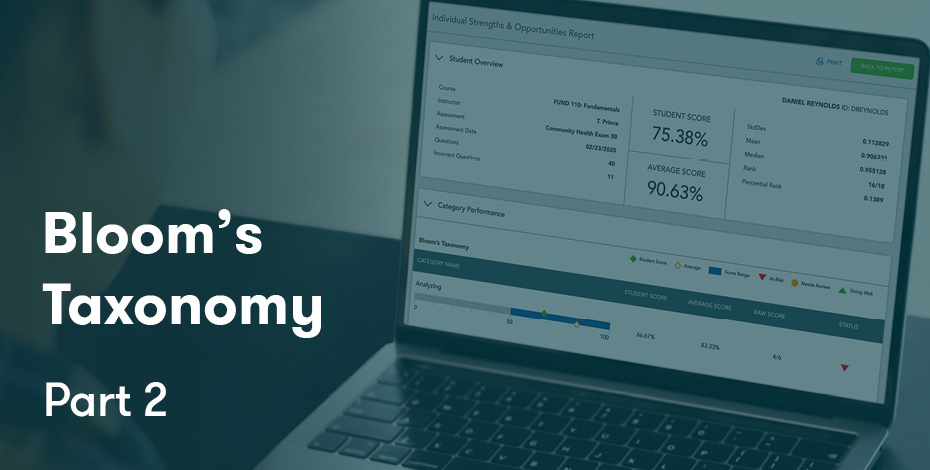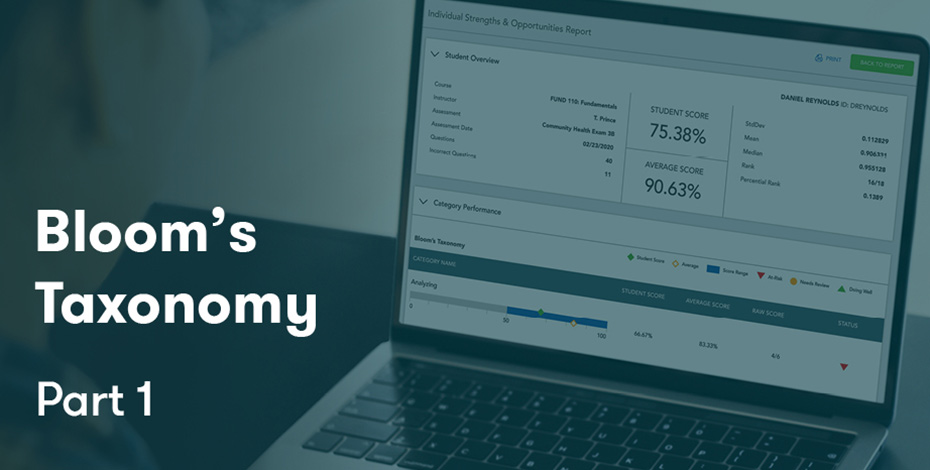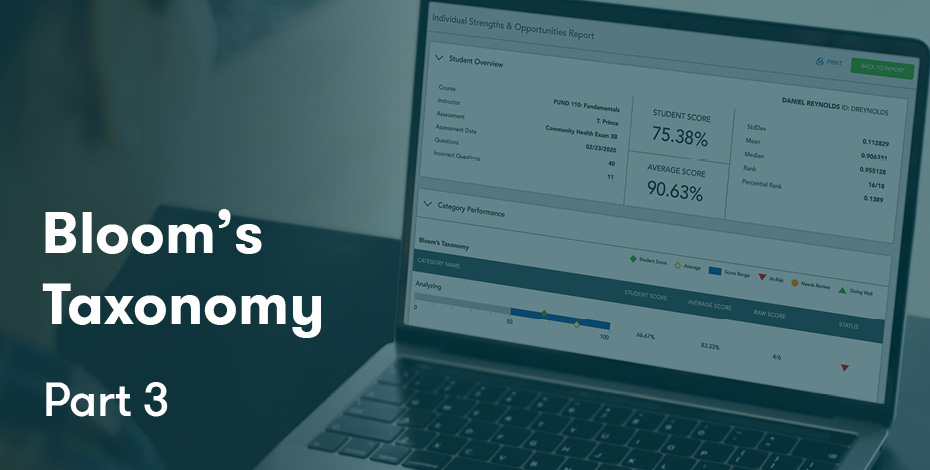Now that we know what Bloom’s Taxonomy is, it’s time to discuss a few helpful tips for applying the framework to assessments as a means of gaining insight into learning comprehension.
Tips for Applying Bloom’s Taxonomy to Assessment
Follow these tips to get the most out of assessments with Bloom’s Taxonomy.

When selecting learning goals for the semester, it’s important to remember that Bloom’s Taxonomy follows a hierarchy, with the lowest level of cognition at the bottom. Therefore, creating exam questions according to expected learning ability in relation to those levels is crucial. For example, exams given toward the beginning of the semester might consist only of questions that apply to the Remembering level of Bloom’s, followed by (as well as combined with) questions that pertain to Understanding and Applying.
2. Introduce exam items that explore higher levels of cognition gradually.
Once students have mastered the learning objectives tied to the lower levels of Bloom’s Taxonomy, educators can begin integrating questions from each of the higher levels. As the semester develops and students gain a stronger understanding of the material, instructors can place less emphasis on the lower levels of Bloom’s Taxonomy in favor of the higher levels.
3. Analyze assessment results and readjust course objectives accordingly.
After reviewing assessments, educators can determine which learning objectives, in relation to Bloom’s Taxonomy, may need to be revisited. ExamSoft allows educators to tag each exam item to the six levels of Bloom’s, as well as key course objectives, to measure learning accordingly. By tagging exam items to key categories, instructors will receive easily digestible reports to help identify specific areas of improvement and adjust the curriculum to keep students on the right track.
Using Bloom’s Taxonomy in assessments, as well as other aspects of learning, is an effective way to support learning improvement and develop a strong curriculum.






